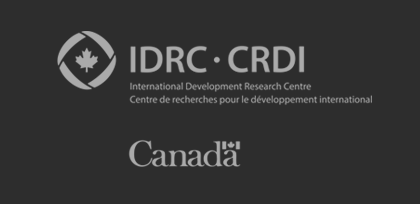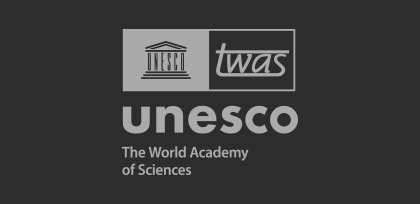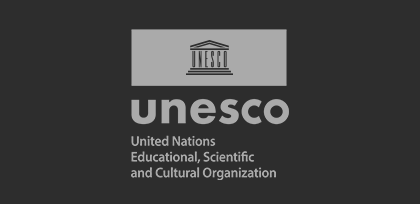Member Profile
Membership type: affiliate
Dulce María Esther González Domínguez
Country of origin: Guatemala Currently in: Guatemala, Guatemala General field of specialization: Astronomy, Space and Earth Sciences-
Degrees
2020 Undergraduate Other -
Current Research Activities
Other
My main interest is Volcanology and monitoring techniques, understanding volcanic systems and the hazards that volcanic products can generate to the population.
Publications resulting from Research:
Volcano observatories and monitoring activities in Guatemala.
El ambiente tectónico y volcánico de Guatemala es extenso y complejo. Tres grandes placas tectónicas, que interactúan constantemente entre sí, y un arco volcánico, que se extiende de este a oeste en la parte sur del país, exigen especial atención en términos de monitoreo y estudios científicos. El Instituto Nacional de Sismología, Vulcanología, Meteorología e Hidrología (INSIVUMEH) es el instituto encargado de ejecutar estas acciones a nivel nacional y civil. En los últimos años, INSIVUMEH ha formado un equipo de vulcanología conformado por personal multidisciplinario que realiza las principales actividades de seguimiento e investigación vulcanológica. Estas actividades incluyen: análisis de señales sísmicas y acústicas, evaluación y análisis de peligros volcánicos, instalación y mantenimiento de equipos de monitoreo, y socialización y difusión del conocimiento volcánico. De todas las estructuras volcánicas de Guatemala, tres volcanes (Fuego, Pacaya y Santiaguito) están en constante erupción y requieren todos los recursos disponibles (económicos y humanos). Estos volcanes presentan una amplia gama de peligros volcánicos (en cuanto a tipo y magnitud), haciendo que el monitoreo diario sea un gran desafío. Uno de los mayores logros del equipo de vulcanología ha sido el desarrollo reciente de un Ranking de Peligrosidad Relativa de los Volcanes de Guatemala, tomando en cuenta diferentes parámetros que permitan una mejor planificación en el futuro, tanto en el monitoreo como en la investigación.
Fuente: Roca, A., Mérida Boogher, E. R., Chun Quinillo, C. M. F., González Domínguez, D. M. E., Chigna Marroquin, G. A., Juárez Cacao, F. J. and Argueta Ordoñez, P. D. (2021) “Volcano observatories and monitoring activities in Guatemala”, Volcanica, 4(S1), pp. 203–222. doi: 10.30909/vol.04.S1.203222
Unravelling the dynamics and hazards of the June 3rd, 2018, pyroclastic density currents at Fuego volcano (Guatemala).
The June 3rd, 2018, eruption of Fuego volcano (Guatemala) produced a complex sequence of small-volume pyroclastic density currents (PDCs) that inundated all sectors around the volcano and propagated >12 km on the southeastern flank, deposited ~50 million m3 of pyroclastic material, and killed at least 430 people in the village of San Miguel de Los Lotes and along the RN-14 road. This eruption has illustrated once again that the behavior of small-volume PDCs remains difficult to predict, demonstrating the need for an improved physical understanding of their generation, transport and depositional processes to ultimately improve assessment of their local hazard potential. In this work, we present preliminary results of an interdisciplinary study of the 2018 PDC deposits of Fuego, integrating: (1) field data of the pristine deposit characteristics recorded immediately after the eruption and after one rainy season, (2) sedimentological data (including grain size distributions and componentry) from samples collected at each lobe front and several exposed stratigraphic sections inside three principal ravines draining the volcano and affected by the eruption (Seca, Ceniza and Las Lajas), (3) preliminary quantification of the observed range of different clast surface textures, shape and vesicularities, as determined by SEM analyses, (4) surface morphological data from high-resolution satellite and aerial photography, and (5) advanced digital terrain model analysis correlated with sedimentological data to reconstruct the sequence of events on June 3rd and propose a conceptual model of PDC generation and emplacement on the SE flank of Fuego. In this model, a sequence of packages of material involved in discrete failure events of a perched mass of pyroclastic material accumulated within an old collapse structure on the upper SE flank, corresponds to the emplacement of a series of pulses of valley-confined PDCs down the Las Lajas channel. Headwall failures and gravitational collapses correlate with specific stratigraphic, sedimentological and textural characteristics of the valley-confined PDC units. The duration of individual granular collapse events serves as a proxy for the mobility of the triggered series of PDCs. Also, our detailed stratigraphic work shows evidence of stacked, massive flow units deposited by rapid stepwise aggradation of successive block-and-ash flow (BAF) pulses and their distribution along the southeastern flank supports the interpretation that the June 3rd PDCs, including the dilute parts of the currents, were largely controlled by the topography. The lack of strong changes in the grain size distributions of the fine sub-populations inside the seven valley-confined BAF lobate front units, together with their high content of fines, imply the presence of a self-limiting attrition process, decreasing the bulk porosity of such long-runout BAFs and lowering their effective friction coefficient during transport to reach longer runout distances. This multi-faceted approach completes previous studies already performed on small-volume PDCs at other volcanoes.
Charbonnier, S. J., Garin, F., Rodríguez, L. A., Ayala, K., Cancel, S., Escobar-Wolf, R., Chigna, G., Chun-Quinillo, C., González, D., Chigna, W., Chun-Quinillo, K., Mérida, R., Juarez, F., & Calder, E. S. (2023). Unravelling the dynamics and hazards of the June 3rd, 2018, pyroclastic density currents at Fuego volcano (Guatemala). Journal of Volcanology and Geothermal Research, 436, 107791. https://doi.org/10.1016/j.jvolgeores.2023.107791
Current profession
Current professional activities type:ResearchMonitoring of the main volcanoes of Guatemala and preparation of volcanic hazard maps obtained through the mapping of volcanic products and the application of probabilistic numerical models.
Workshop and Conference Attended
2018 Napoly, Italy Cities on Volcanes 102018 Arequipa, Perú Volcanic Hazard Assessment2017 Alta Verapaz, Guatmala Simposio Guatemalteco de Vulcanología2022 Arequipa, Perú Monitoreo de Cenizas2022 Arequipa, Perú IX Foro Internacional de Peligros Volcánicos "Sociedad y volcanes: Riesgo y Prevención"2024 La Antigua Guatemala, Guatemala Cities on Volcanoes 122016 Quetzaltenango, Guatemala Worshop on Volcanes 20162017 Japón Volcanic Disaster Risk Reduction and Management for Central and South American Countries with Crisis & Environment Management Policy Institute2018 Guatemala Sismología VolcánicaPresentation given
2018Erupción del volcán de Fuego del 3 de junio del año 2018Cobán, Alta Verapaz, GuatemalaEvent: Congreso Guatemalteco de Geociencias Ambientales: Simposio del volcán de Fuego






